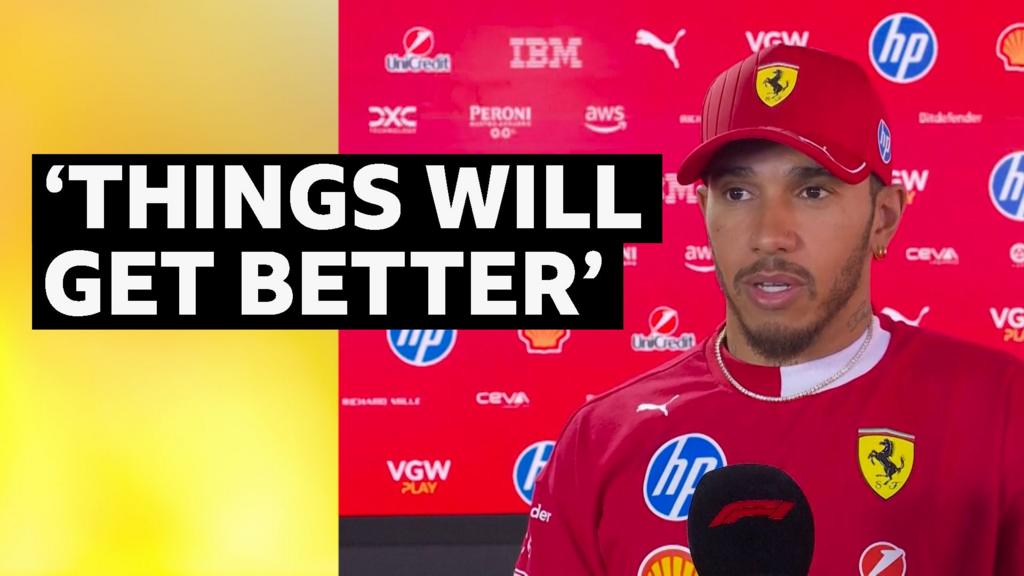Enhancing Customers Experience Throughout Their Buying Journey

Key Takeaways

- Understand the Customer Journey: The customer experience encompasses all interactions throughout the buying journey, influencing perceptions and brand loyalty at each phase: awareness, consideration, and decision.
- Enhance Awareness and Consideration: Use targeted content and transparent product information to raise awareness and foster trust, helping potential customers move smoothly from recognizing their needs to evaluating their options.
- Streamline the Decision Process: Ensure a smooth and convenient checkout experience, whether online or in-store. Promotions like discounts can encourage conversions and enhance customer loyalty.
- Emphasize Personalization and Communication: Tailor recommendations and maintain open lines of communication to boost engagement and trust, making each customer feel valued throughout their journey.
- Utilize Feedback and Analytics: Gather customer feedback and leverage analytics tools to identify pain points and optimize the customer experience, driving satisfaction and retention.
- Adopt Best Practices: Streamline buying processes and leverage technology to make interactions easier and more engaging, ultimately enhancing the overall customer experience and bolstering retail success.
In today’s fast-paced market, understanding your customers’ experience throughout their buying journey is crucial. From the moment they first encounter your brand to the final purchase, each touchpoint shapes their perception and loyalty. You might not realize it, but every interaction—whether online or in-store—can significantly impact their decision-making process.
As consumers navigate through various stages of awareness, consideration, and decision, their needs and expectations evolve. By grasping these nuances, you can tailor your strategies to enhance satisfaction and foster long-term relationships. Let’s dive into the key elements that define the customer journey and explore how you can optimize each phase for a seamless experience.
Understanding Customer Experience

Customer experience encompasses every interaction between you and your customers throughout their buying journey, shaping their perception of your small business. Each stage—awareness, consideration, and decision—presents unique opportunities to enhance their experience.
Definition of Customer Experience
Customer experience refers to the overall impression that consumers form based on their interactions with your brand, including visits to your retail storefront, online communications, and product usage. It involves the emotions and satisfaction levels that emerge during these interactions, significantly influencing customers’ loyalty and advocacy.
Importance of Customer Experience
Customer experience plays a crucial role in the success of your small business. Positive experiences can lead to repeat business, word-of-mouth referrals, and increased revenue. Conversely, negative experiences can deter customers and damage your brand’s reputation. Focusing on optimal customer experience fosters customer loyalty, promotes higher retention rates, and enhances your business’s competitive edge in the retail market.
Stages of the Buying Journey

Understanding the stages of the buying journey helps you enhance customer experience. Each phase shapes consumer perception and can impact your retail success.
Awareness Stage
During the awareness stage, potential customers first recognize their need for a product or service. They might encounter your brand through various channels, including social media, online advertisements, or word-of-mouth referrals. Creating targeted content that addresses consumer pain points can significantly increase awareness. For instance, if you run a small business, highlight how your offerings solve common problems for your audience.
Consideration Stage
In the consideration stage, customers evaluate different options before making a purchase. They compare various products or services, seeking information about features, pricing, and reviews. Providing detailed product descriptions, customer testimonials, and clear pricing on your storefront or website can engage potential buyers. This transparency builds trust and allows consumers to feel confident in their choices.
Decision Stage
During the decision stage, customers are ready to make their final purchases after assessing their options. Ease of purchasing plays a crucial role here. Ensure that your checkout process is smooth and simple, whether in-store or online. Special promotions, such as discounts or free shipping, can further encourage conversions. Aligning your strategies with customer expectations during this stage can lead to increased sales and foster customer loyalty.
Factors Influencing Customer Experience

Customer experience stems from a variety of factors that shape how you engage with your audience throughout their buying journey. Understanding these influences can significantly enhance your small business’s retail strategy.
Personalization
Personalization creates a unique shopping experience for customers. Tailoring recommendations based on their preferences and purchase history can boost engagement. Use customer data to send targeted promotions or provide personalized product suggestions. You enhance loyalty by making each shopper feel valued, ultimately driving repeat business.
Communication
Effective communication maintains customer trust during their buying journey. Keeping customers informed through timely updates about their orders or changes enhances their experience. Utilize various channels—email, social media, or in-store signage—to convey important information. Open lines of communication foster positive interactions with customers, reinforcing brand loyalty.
Convenience
Convenience significantly affects customer satisfaction levels. Streamlining your storefront operations ensures that shoppers enjoy a hassle-free experience. Implement easy checkout processes, flexible payment options, and clear return policies. Enhancing convenience at every stage—from browsing to purchase—helps you capture sales and encourages return visits, solidifying your business’s relevance in the retail space.
Measuring Customer Experience

Measuring customer experience is vital for small businesses looking to refine their retail strategies. Understanding feedback and utilizing analytics tools can significantly enhance your storefront’s performance.
Customer Feedback
Collecting customer feedback provides direct insights into your audience’s preferences and pain points. Utilize surveys, comment cards, or online reviews to gather opinions. Request feedback at various touchpoints, such as after purchases or following service interactions, to better understand experiences. Implementing changes based on feedback not only demonstrates that you value customer input but also helps improve satisfaction and loyalty. For instance, if several customers express frustration over long wait times, consider optimizing your staffing during peak hours.
Analytics Tools
Using analytics tools can provide a deeper understanding of customer behavior. Track metrics like conversion rates, average order value, and customer retention rates to gauge the effectiveness of your strategies. Platforms such as Google Analytics offer insights into customer interactions on your website, allowing you to evaluate how visitors engage with your online store. In retail, point of sale (POS) systems can also deliver data on purchasing patterns and inventory performance. Analyzing this data enables you to make informed decisions and tailor your offerings to better meet customer needs.
Best Practices for Enhancing Customer Experience

Enhancing customer experience can significantly boost your small business’s retail success. Focus on strategies that streamline the buying process and leverage technology to meet customer needs.
Streamlining the Buying Process
Streamlining the buying process involves simplifying every step for customers. Ensure your storefront displays products clearly, allowing customers to locate items easily. Implement quick and straightforward checkout procedures, minimizing wait times and frustrations. Offer multiple payment options, including contactless payment, to accommodate different preferences. Maintain a transparent return policy, so customers feel secure in their purchases. Providing clear signage in your store and online can further guide customers, reducing confusion and enhancing overall satisfaction.
Leveraging Technology
Leveraging technology effectively transforms your customer experience into a seamless journey. Utilize e-commerce platforms that integrate with your physical store, ensuring consistent inventory management and real-time updates for customers. Employ customer relationship management (CRM) systems to track interactions, personalize communications, and improve engagement. Use analytics tools to gather insights on purchasing behaviors and preferences, enabling you to tailor your offerings and marketing strategies. Consider implementing chatbots on your website for instant customer support, enhancing convenience for shoppers as they browse your products.
Conclusion

Enhancing customer experience throughout the buying journey is essential for building lasting relationships and driving business success. By understanding the stages your customers go through from awareness to decision-making, you can tailor your strategies to meet their evolving needs.
Focusing on personalization, effective communication, and convenience will set your brand apart. Remember to gather feedback and utilize analytics tools to refine your approach continually.
Creating a seamless and satisfying experience not only fosters loyalty but also encourages repeat business and referrals. Investing in your customers’ journey is an investment in your brand’s future.
Frequently Asked Questions

What is customer experience?
Customer experience refers to the overall impression a consumer forms based on their interactions with a brand, including visits to stores, online communications, and product usage. It plays a crucial role in consumer perception and loyalty, influencing their likelihood of returning or recommending the brand.
Why is the customer journey important?
The customer journey outlines the stages consumers go through, from awareness to decision-making. Understanding these stages helps businesses optimize interactions and tailor strategies that enhance customer satisfaction, ultimately driving loyalty and repeat business.
What are the stages of the buying journey?
The buying journey consists of three key stages: Awareness (recognizing a need), Consideration (evaluating options), and Decision (making a purchase). Each stage requires different marketing strategies to engage customers effectively.
How can businesses improve customer experience?
Businesses can enhance customer experience by personalizing interactions, maintaining effective communication, and ensuring convenience through streamlined operations. Implementing customer feedback and leveraging technology can also significantly improve satisfaction.
What role does personalization play in customer experience?
Personalization tailors recommendations based on customer preferences and purchase history, making shoppers feel valued. This approach fosters deeper connections and boosts customer loyalty, which can lead to repeat business.
How can businesses measure customer experience?
Businesses can measure customer experience through customer feedback surveys, comment cards, and online reviews. Analytics tools such as Google Analytics provide insights into customer behavior, helping businesses make informed decisions to enhance experiences.
What are some best practices for optimizing the buying process?
Best practices include streamlining the checkout process, ensuring transparent pricing and return policies, and utilizing technology for seamless interactions. Clear product displays and responsive customer support can also enhance the buying experience.
How does customer experience impact business success?
Positive customer experiences lead to increased loyalty, repeat business, and referrals, while negative experiences can harm a brand’s reputation. Businesses that prioritize customer experience often outperform their competitors and achieve greater success.
What technologies can enhance customer experience in retail?
Technologies like e-commerce platforms, customer relationship management (CRM) systems, and analytics tools enable businesses to personalize communications and understand customer behaviors. Chatbots for instant support also improve convenience and satisfaction.
Why is gathering customer feedback crucial?
Gathering customer feedback provides direct insights into preferences and pain points. Implementing changes based on this feedback shows customers that their opinions matter, leading to improved satisfaction and loyalty over time.
Image Via Envato
This article, "Enhancing Customers Experience Throughout Their Buying Journey" was first published on Small Business Trends
What's Your Reaction?
 Like
0
Like
0
 Dislike
0
Dislike
0
 Love
0
Love
0
 Funny
0
Funny
0
 Angry
0
Angry
0
 Sad
0
Sad
0
 Wow
0
Wow
0































































































